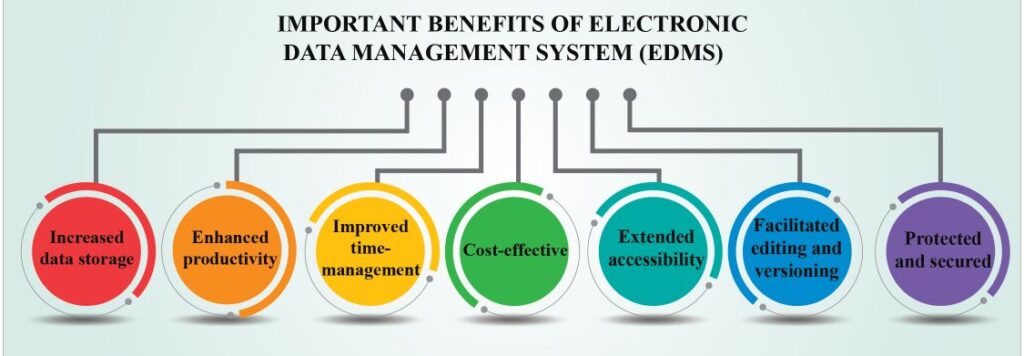Electronic Data Management System – 7 Important Benefits
Electronic Data Management System (EDMS) is a digital platform established for conducting clinical studies. It is a scientific platform provided for clinical, paramedical, scientific, marketing, sales personnel as well as patients, where they can connect through digitalization. Shift from paperwork storage to digital data compilation may be initially laborious but it has several top benefits which are listed below:
- Increased data storage
The advanced storage of data management is an advantage for healthcare professionals (HCPs). Electronic Data Management System (EDMS) helps to store enormous information that would require the investment of a large amount of money and maintenance expense if it is stored in papers and filled in cabinets.
- Enhanced productivity
Healthcare organizations and professionals spend half of their time creating and managing clinical documents. Many of them are focused on dealing with the paper documents or communicating via emails maintaining a productive flow that might be an issue. Most of them think that managing data with an automatized tool would enhance their overall clinical environment, save time and improve productivity.
- Improved time-management
Time efficiency is an important advantage of Electronic Data Management System (EDMS). It is proved to be the best solution when it comes to the search and maintenance of documents related to the study. It is more time-consuming to look for a paper document than using Electronic Data Management System (EDMS). Moreover, templates, drag-and-drop function, and metadata help employees save time which they had to do manually.
- Cost-effective
Electronic Data Management System (EDMS) installation is an investment of one-time money whereas the benefits are incomparable. It is easier to track, count and align the finances. It is cost-effective due to the following reasons:
- Elimination of filling up cabinets and storage, as the data here is stored in the cloud.
- Filing and storing data in a document is not required.
- Extended accessibility
The most basic function of EDMS is providing remote access to the HCPs and the patients. The bulk information is secured and stored in the cloud. During the COVID-19 pandemic, this function proved to be immensely helpful for both the HCPs as well as the patients.
- Facilitated editing and versioning
One of the advantages of Electronic Data Management System (EDMS) is versioning and editing which is required when many are involved on the same document at the same time. One of the benefits of Electronic Data Management System (EDMS) is to track documenting as well as storing its versions whenever the original is required.
- Protected and secured
Electronic Data Management System (EDMS) helps to store and secure clinical data very effectively.
A shift from paper to Electronic Data Management System (EDMS) is not an easy task but comparing all the benefits, it is a tribute to the fashionable trend of digitalization.
EDMS at WorkSure®
WorkSure® provides a more patient-centric approach where EDMS plays a crucial role. If you do not have any prior experience or are worried about the transition, we can provide you with services as a contract research organization. WorkSure® Electronic Data Management System (EDMS) efficiently stores and organizes diverse clinical, research, and administrative data. Our cost-effective Electronic Data Management System (EDMS) accelerates the data-cleaning process and its automated data management platform enhances efficiency and productivity in healthcare sectors. Clinical sites can easily and quickly submit data to the EDMS, making it immediately accessible to data reviewers. Using EDMS, data managers can check the data or information entered into the system and generates queries to sites to address discrepancies. It aids medical professionals in efficiently collecting and managing high-quality clinical trial/research data. This easy-to-use suite coupled with data management and analytical tools, shortens the timeline of researchers and companies in achieving the desired outcome.
